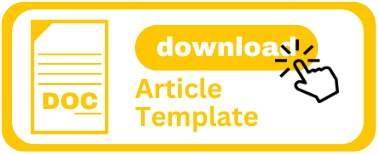Penggunaan Gadget dan Kejadian Temper Tantrum pada Anak Usia 1 Hingga 5 Tahun
DOI:
https://doi.org/10.33088/jkr.v5i1.907Keywords:
Toodler, Gadget, Temper TantrumAbstract
Many parents give gadgets to toddlers early on the grounds that they are learning media, communication tools and play bring their own anxiety. This condition makes parents start complaining about changes in children's behavior when they are not given gadgets according to their wishes. Children cry loudly, throw tantrums and behave violently. This study aims to determine the relationship between the use of gadgets in toddlers and the occurrence of temper tantrums. The study was conducted using a quantitative correlation approach to 106 parents who entrusted their children to day care. Intake of respondents using total sampling technique with a research time of 1 month. Data collection was carried out using primary data from the results of distributing questionnaires using gadgets and temper tantrum questionnaires to parents of children. The questionnaire was adopted from Lusia research which had been tested for validity and reliability, with a value of ? = 0.841. Data analysis used univariate and bivariate chi-square analysis. The results of the study concluded that there was a significant relationship between the use of gadgets and the incidence of temper tantrums in toddlers with a p value of 0.021 (p <0.05). Parents are expected to replace gadgets with other games that can hone growth and development, as well as for assistants at day care centers to be able to coordinate with parents in terms of increasing parental understanding regarding the influence of using gadgets and selecting types of games that are suitable for toddlers.
Downloads
Published
Issue
Section
License
Authors who publish with JURNAL KEPERAWATAN RAFLESIA agree to the following terms:
- Authors retain copyright and grant the Jurnal Keperawatan Raflesia right of first publication with the work simultaneously licensed under a Creative Commons Attribution License (CC BY-NC-SA 4.0) that allows others to share (copy and redistribute the material in any medium or format) and adapt (remix, transform, and build upon the material) the work for any purpose, even commercially with an acknowledgement of the work's authorship and initial publication in Jurnal Keperawatan Raflesia.
- Authors are able to enter into separate, additional contractual arrangements for the non-exclusive distribution of the journal's published version of the work (e.g., post it to an institutional repository or publish it in a book), with an acknowledgement of its initial publication in Jurnal Keperawatan Raflesia.
- Authors are permitted and encouraged to post their work online (e.g., in institutional repositories or on their website) prior to and during the submission process, as it can lead to productive exchanges, as well as earlier and greater citation of published work (See The Effect of Open Access).

















